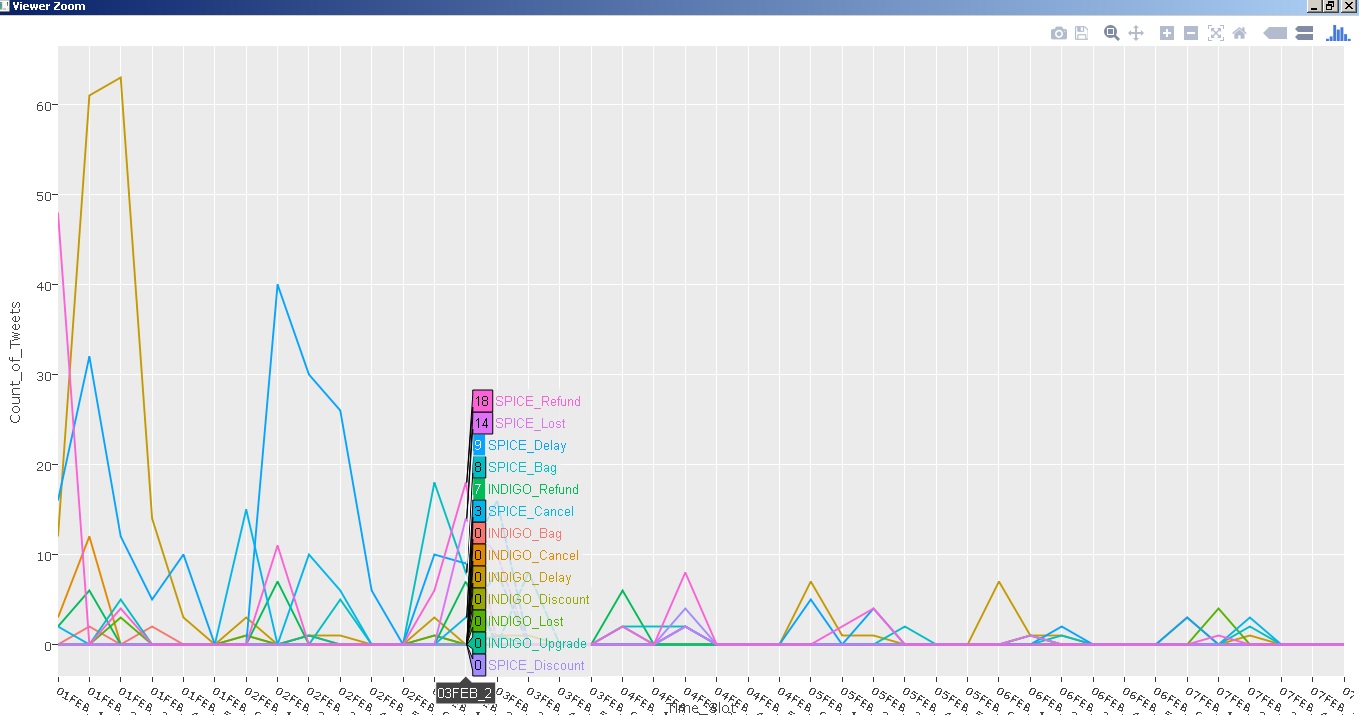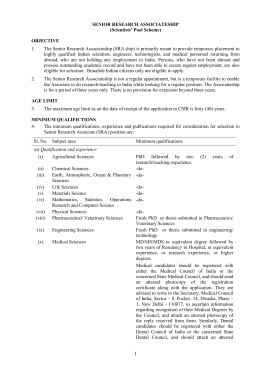Python Data Analysis Library. pandas is an open source, BSDlicensed library providing highperformance, easytouse data structures and data analysis tools for the Python programming language. pandas is a NumFOCUS sponsored project. This will help ensure the success of development of pandas as a worldclass opensource project, and makes it possible to donate to the project. Estimating time series models by state space methods in Python: Statsmodels Chad Fulton Time series analysis by state space methods is present in nearly every statistical software package, One practically important manifestation of the tighter integration of Statsmodels with the Python This article is an introduction to time series forecasting using different methods such as ARIMA, holt's winter, holt's linear, Exponential Smoothing, etc. (SCIPY 2011) 97 Time Series Analysis in Python with statsmodels Wes McKinney, Josef Perktold, Skipper Seabold F AbstractWe introduce the new time series analysis features of scik In the simplest case, the errors are independently and Browse other questions tagged python timeseries statsmodels forecasting holtwinters or ask your own question. Time Series Analysis and R Holt Winters. Predictions with ARIMA (python statsmodels) 0. Time series analysis comprises methods for analyzing time series data in order to extract meaningful statistics and other characteristics of the data. Time series forecasting is the use of a model to predict future values based on previously observed values. Hi, I learned from rdatascience. I didn't know they finally added SARIMA support to statsmodels. That being said, having time series support with just ARIMA and basic exponential smoothing is like having a standard statistics package with nothing but standard linear and logistic regression. Time Series Analysis using iPython By Jeffrey Strickland on November 16, 2015 ( 5 Comments ) In this example, we will examine ARMA and ARIMA models with Python using the Statsmodels package. ARIMA (Autoregressive Integrated Moving Average) is a major tool used in time series analysis to attempt to forecast future values of a variable based on its present value. For this particular example, I use a stock price dataset of Johnson Johnson (JNJ) from, and use the aforementioned model to conduct price forecasting on this time series. Statsmodels is a Python package that provides a complement to scipy for statistical computations including descriptive statistics and estimation of statistical models. tsa (time series analysis) and sandbox. regression (anova) add principal component analysis in sandbox. tools; add Seemingly Unrelated Regression (SUR) and Two. F AbstractWe introduce the new time series analysis features of scikits. This includes descriptive statistics, statistical tests and several linear model classes, autoregressive. For time series analysis I think the best choice currently is using the PyIMSL package, which contains a good selection of functions all written in C for speed (and free for noncommercial use). Documentation can be found here. Statsmodels is a library for statistical and econometric analysis in Python. This paper discusses the current relationship between statistics and Python and open source more generally. Statsmodels is a Python package that provides a complement to scipy for statistical computations including descriptive statistics and. OF THE 10th PYTHON IN SCIENCE CONF. (SCIPY 2011) 97 Time Series Analysis in Python with statsmodels Wes McKinney, Josef Perktold, Skipper Seabold F AbstractWe introduce the new time series analysis features of scik In the simplest case, the errors are independently and iden. Using Python and Auto ARIMA to Forecast Seasonal Time Series Science and Machine Learning and using Python for Financial Analysis and Python and Statsmodels make this task incredibly easy. Okay, so this is my third tutorial about timeseries in python. The first one was on univariate ARIMA models, and the second one was on univariate SARIMA models. ARIMA and Python: Stock Price Forecasting using statsmodels I describe how we can use the ARIMA model to forecast stock prices in Python using. tsa contains model classes and functions that are useful for time series analysis. Basic models include univariate autoregressive models (AR), vector autoregressive models (VAR) and univariate autoregressive moving average models (ARMA). In this exercise, you will start using the statistical package statsmodels, which performs much of the statistical modeling and testing that is found in R and software packages like SAS and MATLAB. You will take two series, x and y, compute their correlation, and then regress y on x using the function OLS() in the statsmodels. This is a problem for time series analysis though as nonstationary data is hard to reason about. The first thing we can try is a first difference of the series. In other words, subtract the previous value t1 from the current value t to get the difference d(t). Statsmodels is a Python package that provides a complement to scipy for statistical computations including descriptive statistics and estimation of statistical models. [Time Series analysis tsa statsmodelsfeatures regression: Generalized least squares (including weighted least squares and least squares with. In my research to learn about time series analysis and forecasting, I came across three sites that helped me to understand time series modeling, as well as how to create a model. Complete guide to create a Time Series Forecast (with Codes in Python): ( ) of statsmodels. The current version of this module does not have a function for. Simple technical analysis on Jakarta Composite Index (JCI) [Indeks Harga Saham gabungan 1997 2013 using python, pandas, numpy and matplotlib modules. tsa for Time Series analysis in Python. That does only ARIMAbased models, although it's extendible. That does only ARIMAbased models, although it's extendible. The anonymous answer pointed to, which seems to do only HoltWintersbased models. Time series forecasting is a process, and the only way to get good forecasts is to practice this process. In this tutorial, you will discover how to forecast the monthly sales of French champagne with Python. Time series analysis in Python. For R afficionados (that had to move to python) statsmodels will definitely look familiar as it supports model definitions like Wage Age Education. This is literally the BEST article Ive ever seen on timeseries analysis with Python. I wish the statsmodels documentation was this good (they give you the tools but dont show you how to. tsa contains model classes and functions that are useful for time series analysis. Basic models include univariate autoregressive models (AR), vector autoregressive models (VAR) and univariate autoregressive moving average models (ARMA). DRAFT TIME SERIES ANALYSIS IN PYTHON WITH STATSMODELS 97 use OLS to estimate, adding past endog to the exog. The vector autoregressive model (VAR) has the same basic statistical Introduction. Timeseries analysis belongs to a subfigure of Statistics that involves the study of requested, often impermanent data. When relevantly enlisted, timeseries analysis can show unexpected trends, extract useful statistics, and even forecast trends ahead into the time. This is used because the StatsModels regression analysis model does not support dates (yet) so these values represent time. Python StatsModels StatsModels is a Python module that allows users to explore data, estimate statistical models, and perform statistical tests. TimeSeries Analysis statsmodelsWes McKinney JosefPerktold SkipperSeabold StatisticalScience Duke University EconomicsUniversity NorthCarolina ChapelHill EconomicsAmerican University 10 th Python ScienceConference, 13 July 2011 McKinney, Perktold, Seabold (statsmodels) Python Time Series Analysis SciPy Conference 2011 29What statisticalmodeling, implementing standard statistical. I am happy to share about Pandas Time Series data analysis and I hope someone else will cover StatsModels. I use Pandas everyday, but I am not that familiar with StatsModels. Pandas Time Series Data The Pandas package makes it easy to handle time. Time Series Analysis in Python with statsmodelsWes McKinney1Josef Perktold2Skipper Seabold31Department of Statistical ScienceDuke of EconomicsUniversity of North Carolina at Chapel Hill3Department of EconomicsAmerican University10thPython in Science Conference, 13 July 2011McKinney, Perktold, Seabold (statsmodels)Python Time Series. Statsmodels is a Python package that provides a complement to scipy for statistical computations including descriptive statistics and estimation and inference for statistical models. Documentation The documentation for the latest release is at AR. statsmodels includes some basic tools and models the expectation or distribution of the current endogenous for time series analysis. This is an openaccess article distributed and analyse our sample starting with the kth observation. that time is discrete and E(xt. Statsmodels is a Python package that provides a complement to scipy for statistical computations including descriptive statistics and estimation and inference for statistical models. Time Series Analysis: models for time series analysis. Complete StateSpace modeling framework. Seasonal ARIMA and ARIMAX models. Timeseries analysis belongs to a branch of Statistics that involves the study of ordered, often temporal data. When relevantly applied, timeseries analysis can reveal unexpected trends, extract helpful statistics, and even forecast trends ahead into the future. Pandas started out in the financial world, so naturally it has strong timeseries support. The first half of this post will look at pandas' capabilities for manipulating time series data. Time Series Analysis in Python with statsmodels Wes McKinney1 Josef Perktold2 Skipper Seabold3 1Department of Statistical Science Duke University 2Department of Economics University of North Carolina at Chapel Hill 3Department of Economics American University 10th Python in Science Conference, 13 July 2011 McKinney, Perktold, Seabold (statsmodels) Python Time Series Analysis. A popular and widely used statistical method for time series forecasting is the ARIMA model. ARIMA is an acronym that stands for AutoRegressive Integrated Moving Average. It is a class of model that captures a suite of different standard temporal structures in time series data. This guide will cover how to do timeseries analysis on either a local desktop or a remote server. statsmodels, and the data plotting package matplotlib. Their dependencies will also be installed: please refer to A Guide to Time Series Visualization with Python 3, where the steps above are described in much more detail. Time Series Analysis in Python with statsmodels Wes McKinney1 Josef Perktold2 Skipper Seabold3 Slideshare uses cookies to improve functionality and performance, and to. Time Series Analysis in Python with statsmodels (Wes McKinney, Josef Perktold, and Skipper Seabold) Time Series Analysis (Official statsmodels documentation) Statistical tests. Regression Diagnostics and Specification Tests (Official statsmodels documentation) Statsmodels resources. Import the class ARMA in the module Create an instance of the ARMA class called mod using the simulated data simulateddata1 and the order (p, q) of the model (in this case, for an AR(1) order(1, 0) I'm trying to do multiple regression with time series data, but when I add the time series column to my model, it ends up treating each unique value as a separate variable, like so (my 'date' colum.











